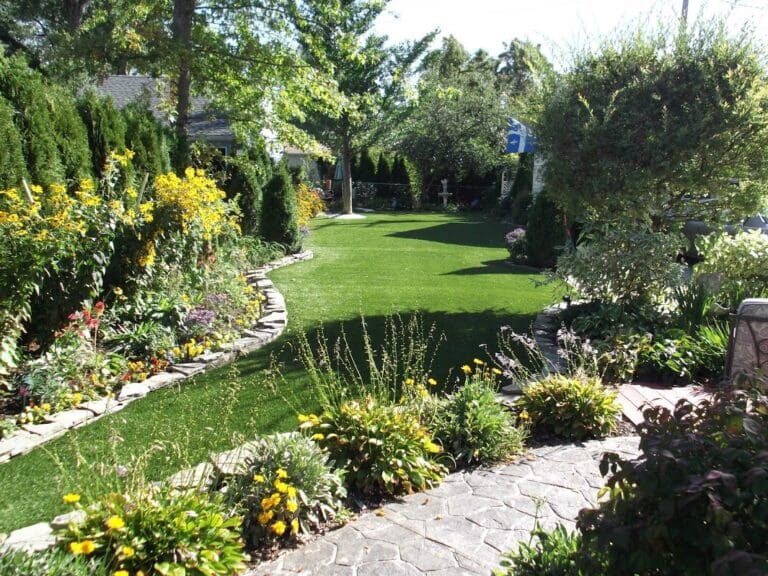
Common Questions
About Artificial Turf
There are common questions that can come up when you are thinking about changing your traditional grass at home or your business to artificial turf. When deciding to switch, both homeowners and business owners often have a lot of questions, questions about costs, longevity, drainage, safety, etc.
Below are some common ones that come up:
- What are the benefits of artificial turf over natural grass?
- Low maintenance: No need for mowing, watering, or fertilizing.
- Water savings: Greatly reduces water consumption, ideal for dry climates or water-restricted areas.
- Durability: Artificial turf can withstand heavy use, making it ideal for homes with kids or pets.
- Year-round greenery: Turf stays green and lush in all seasons.
- Allergy reduction: It can reduce allergens like pollen, which are common with natural grass.
- How long does artificial turf last?
Depending on the quality and usage, artificial turf typically lasts between 15 to 20 years. Higher-quality products may last longer with proper care.
- How does artificial turf drain water?
Modern artificial turf is designed with a perforated backing that allows water to drain through efficiently, preventing puddling or flooding even during heavy rain.
- Is artificial turf safe for children and pets?
Yes, artificial turf is generally made from non-toxic materials and is safe for both children and pets. Many products are specifically designed with softness and comfort in mind.
- How hot does artificial turf get in summer?
Artificial turf can become hot under direct sunlight, especially during the summer. However, certain types come with cooling technology or can be cooled by simply spraying water on them. Shade structures can also help reduce heat.
- What does artificial turf cost?
The initial cost can be higher than installing natural grass due to material and installation expenses. However, the long-term savings on water, fertilizers, mowing equipment, and maintenance make it cost-effective over time. On average, it can range from $8 to $15 per square foot, depending on quality and complexity.
- Does artificial turf require any maintenance?
While artificial turf is low-maintenance, it’s not entirely maintenance-free. Debris like leaves or pet waste may need to be removed. Occasional brushing can help keep the blades standing upright, and infill materials may need to be replenished over time.
- How does artificial turf affect the environment?
There’s a debate on this. While artificial turf conserves water and eliminates the need for harmful pesticides or fertilizers, it is made from synthetic materials.
However, some brands offer eco-friendly options, and artificial turf can help reduce carbon emissions by eliminating the need for gas-powered lawn equipment.
- Will weeds grow through artificial turf?
Weed growth is minimal with proper installation. A weed barrier is usually placed underneath the turf to prevent growth, but some weeds may occasionally sprout around the edges or seams.
- Can artificial turf be installed on all surfaces?
Artificial turf can be installed on various surfaces, including soil, concrete, and decking. Proper preparation is required to ensure a smooth and even surface for the turf.
- What is the installation process like?
The process involves removing the existing lawn, preparing a base (usually a layer of crushed stone or sand), rolling out the turf, securing it, and adding infill to keep the blades upright and improve drainage. Professional installation is recommended for the best results.
- Does artificial turf fade or lose its color?
High-quality turf is UV-protected and designed to resist fading from sun exposure. However, cheaper options may lose color over time.
These questions are essential to address when helping everyone make informed decisions about switching to artificial turf. If you are thinking about changing to artificial turf, contact Sure-Turf today to discuss your concerns and questions.
